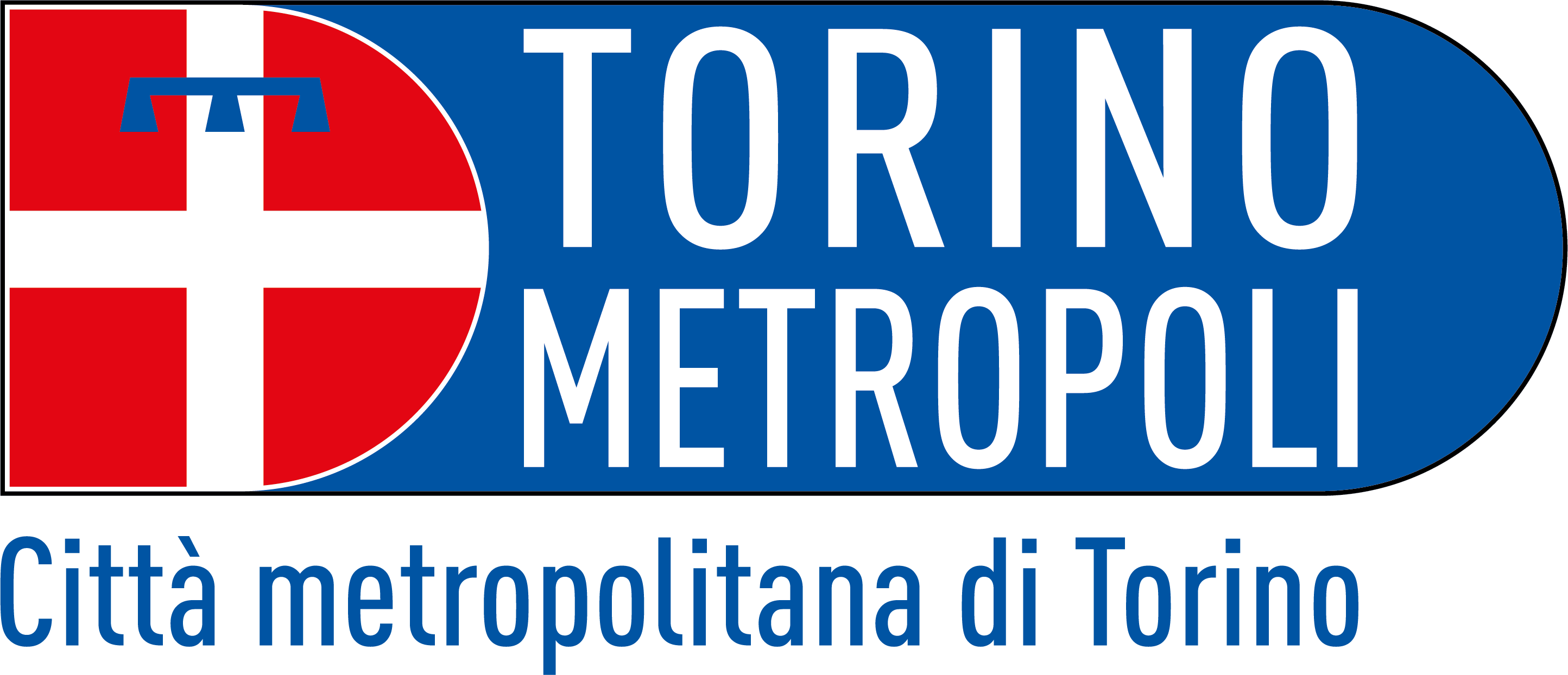The historical series of data on waste production and separate collection in Turin offers an insight into the past and present of waste management in the Piedmontese capital.
Reading time: 6 min.
Planning a solid strategy for urban waste collection is of paramount importance to mitigate the negative impacts of human beings on the environment. In fact, a structured separate waste collection service contributes to a greater interception of waste and an improvement in the quality of the fractions collected, with a consequent reduction in undifferentiated waste and waste to be sent to energy recovery or, residually, to landfill.
The service, provided in the City of Turin by Amiat Gruppo Iren, is divided by neighbourhood and according to two models:
- Home collection, which in turn is carried out through two modes:
- By 'door-to-door', whereby waste is collected directly from users;
- With 'neighbourhood collection', also known as 'eco-islands' or 'proximity islands', which consist of smart bins placed on public land, which can only be used by residents through the use of a personal electronic card;
- Street collection, implemented through the use of large containers placed on public land and accessible to anyone.
The model currently most widespread in Turin's neighbourhoods is the home collection model, except for the Centre, where the street model is still in place. The 'door-to-door' mode is the most widespread. The following neighbourhoods are those subject to the recent installation of 'neighbourhood collection': the central part of San Salvario (in the map called 'Quadrilatero'), Traiano, San Secondo, San Donato, Spine, Barriera di Milano, Borgata Vittoria-Madonna di Campagna and Falchera.
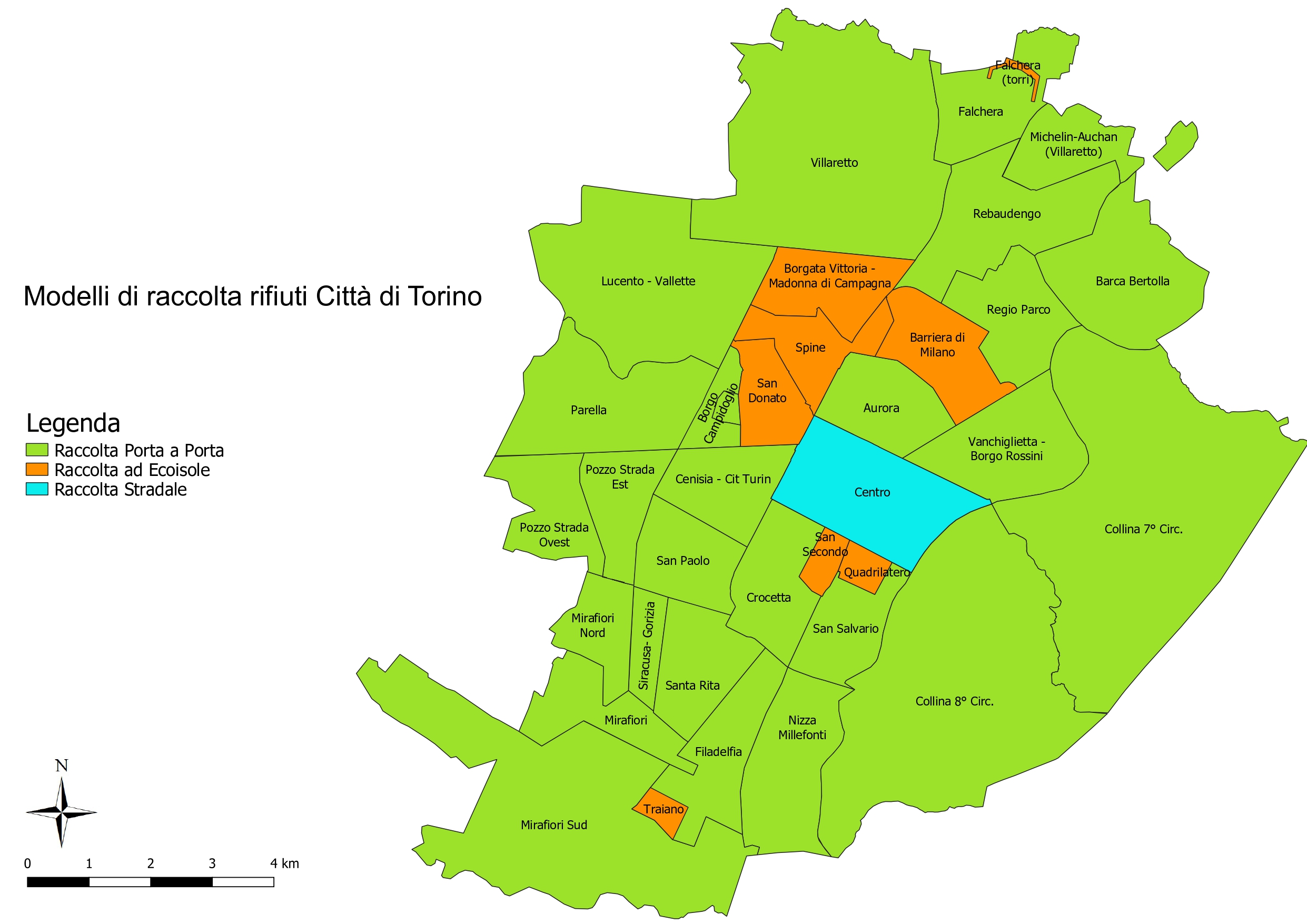
What is the trend in separate waste collection in Turin in recent years?
The operator has published the total quantities (in tonnes) of undifferentiated waste and separate collection. For the latter, the quantities of the main fractions collected are also published.
The historical series on the trend of separate waste collection in Turin shows a steady growth between 2016 and 2021. In fact, it goes from around 43% separate collection recorded in 2016 (almost 187,000 tonnes) to 53.3% in 2021 (almost 220,000 tonnes), marking an increase of no less than ten percentage points over five years. In 2020, Turin saw a decrease in total municipal waste production compared to 2019 (about -40,000 tonnes), attributable to the effects of the COVID-19 pandemic. In 2021, the quantities produced returned as expected to values similar to 2019. However, it is interesting to note the different split between separate and mixed waste collection between 2019 and 2021: separate waste collection increased further, while mixed waste continued to decrease. In fact, 2020 was the year in which separate collection made up more than 50 per cent of the total municipal waste produced.
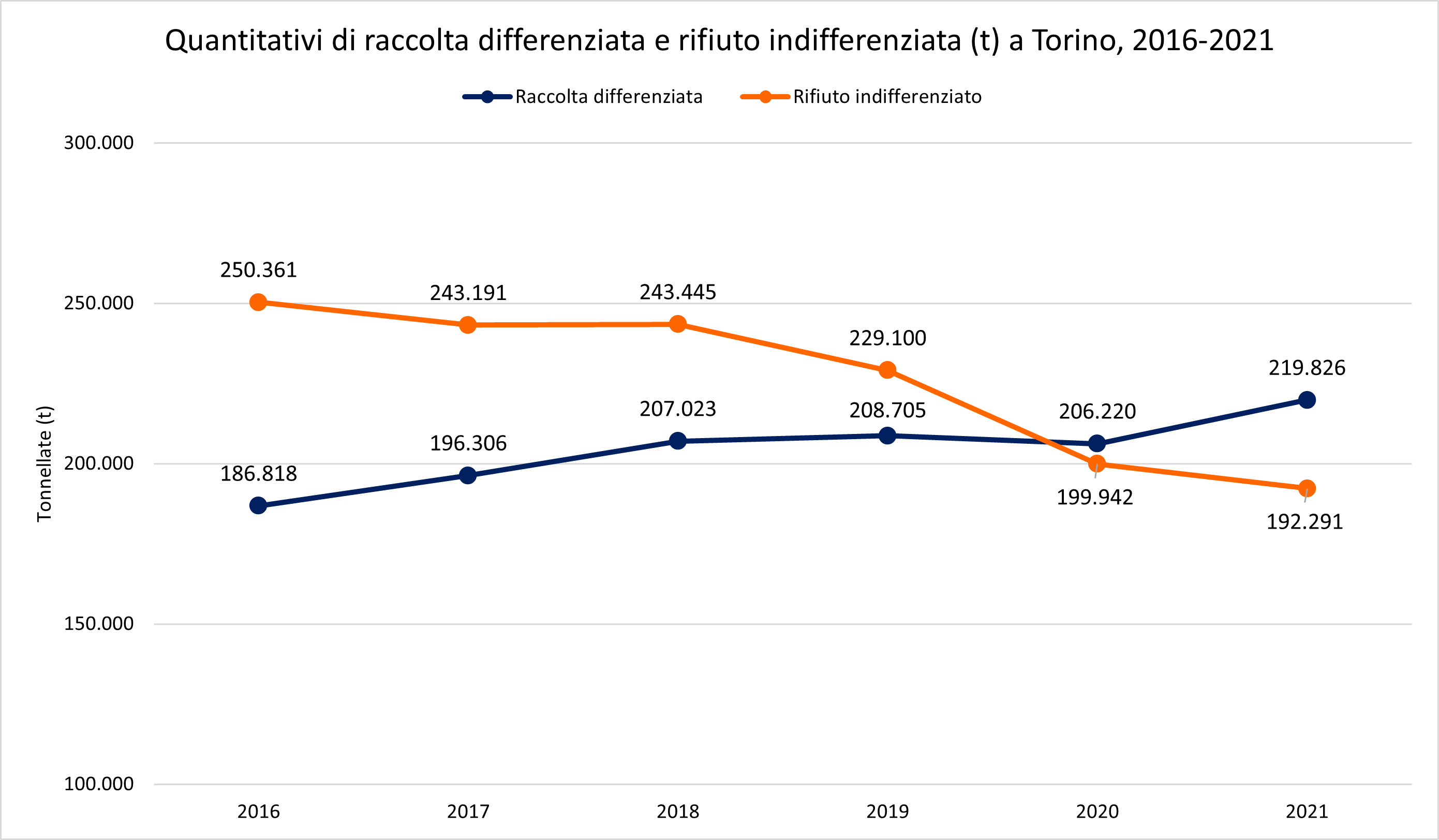
Data broken down by collection model and by district
The data provided by Amiat shown below relate to the percentage of separate waste collection recorded by the two different collection models: home collection (combining 'door-to-door' and 'neighbourhood collection') and street collection. The data show that home collection is the best performing model in this respect.
The following graph shows a decrease in the separate collection percentage of the home collection model: this figure is not so much related to the performance of the model as to the neighbourhoods that have seen the collection model adopted change over the years, and thus have switched from one group to another. This figure could therefore be misleading. The move of some less virtuous neighbourhoods into the home collection grouping has indeed led to a lowering of the average separate collection percentage of that group. However, looking at individual neighbourhoods shows a clear improvement with the switch from a street-based to a home-based model.
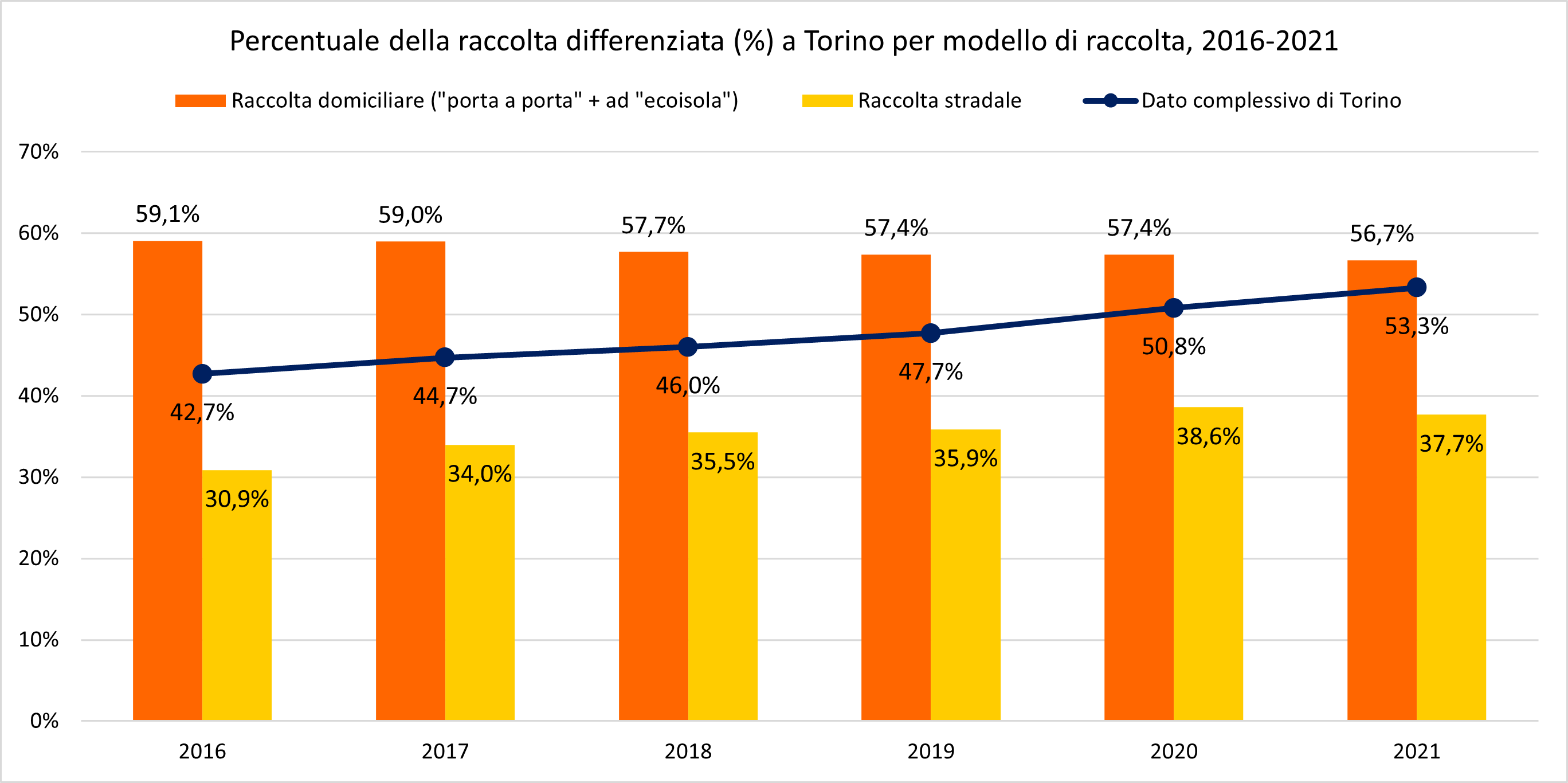
Going into the specifics of the individual neighbourhoods in Turin, distinguishing the data of the domiciliary model in the two modes ('door-to-door' and 'neighbourhood collection') provides a broader and more in-depth overview of separate waste collection.
In 2021, the 'door-to-door' mode is the most widespread (19 neighbourhoods). This is followed by 7 neighbourhoods served by 'neighbourhood collection' (of which 3 are being activated in the year). The Turin neighbourhoods with the best performance in 2021 are Traiano (with 67% separate collection) and Madonna del Pilone (with 65%): the former employs the 'neighbourhood collection' mode, while the latter the 'door-to-door' mode. The street model was instead employed in three neighbourhoods: Barriera di Milano (where, however, 'proximity-islands' were installed in 2022), Centro Storico and Vanchiglia, with less appreciable performance.
Confirming how the 'door-to-door' and 'neighbourhood collection' modes succeed in intercepting greater quantities of differentiated waste than the street model, it should be noted that, in the neighbourhoods where the waste collection model was changed from 2016 to 2021, there are now also greater quantities of waste collected separately. To cite a more recent example, the Spine area went from around 45% separate collection in 2020, with the street model, to as much as 64% in 2021, following the installation of the 'neighbourhood collection'.
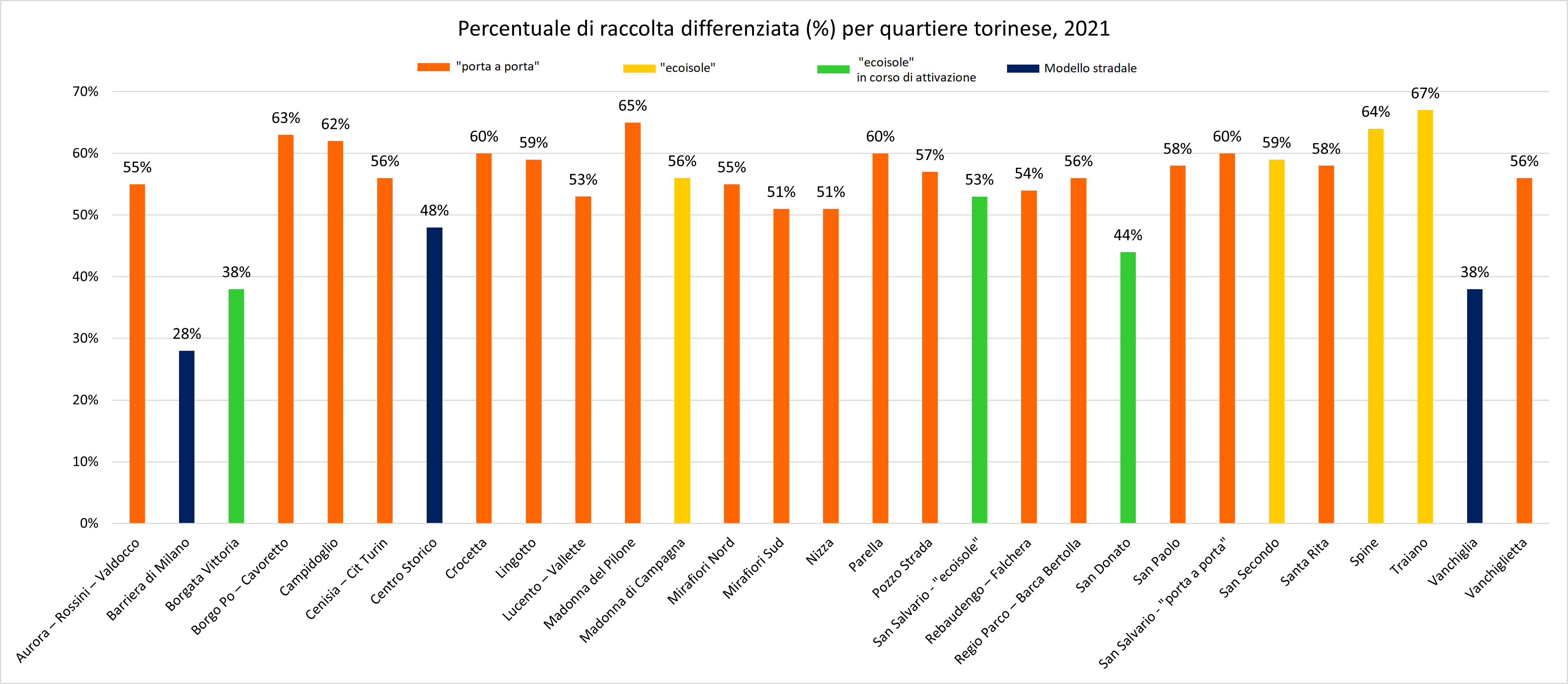
The percentage of separate waste collection in Turin has been growing steadily in recent years. In particular, the data provided shows that the home collection model is preferable to the street collection model, as it is able to intercept greater quantities of sorted waste.
Giacomo Pace
Consult our Waste Dictionary, for more quality separate waste collection, and our map, to find the street bins nearest to you!
If your neighbourhood has 'door-to-door' collection, also consult our collection calendar on the web app 'La tua differenziata'.
